
ALL ROADS LEAD TO CULVER CITY
Imagine for a moment that you are a contestant on the game show Jeopardy! and you were presented with the answer, “This community’s slogans have included ‘The Motion Picture Capital of the World,’ ‘The Heart of Screenland,’ and ‘Where Hollywood Movies are Made.'” If you’re like me you’d probably ask, “What is Hollywood?” with some confidence. If you did, however, Alex Trebek would make that slightly pained and disappointed expression and tell you that “the question we were looking for is “What is Culver City?” And again, if you’re at all like me, you’d probably go, “Huh?” By the way, Jeopardy! has been filmed in Culver City since 1994.
Culver City is, in fact, both currently and historically a major hub in the production of mainstream American Cinema (you know, the films usually referred to as “Hollywood” movies) but for whatever reason — and despite the best efforts of many Culverites — it has been far less successful than the Hollywood neighborhood in connecting its name to the entertainment industry in the global public’s mind. In fact, I’d wager that more tourists and Angelenos associate Burbank, North Hollywood, Studio City, and Universal City with “Hollywood” film production than they do Culver City.
I’m not really sure what makes a city a “Motion Picture Capital of the World.” For years now, both Mumbai, India and Lagos, Nigeria (Bollywood and Nollywood, respectively) have annually surpassed the entire USA in film production (and tellingly, as with Kollywood, Lollywood, Tollywood, &c, signal their film-centricity by using a portmanteau that incorporates their own city or language with “Hollywood” and not “Culver City”). Meanwhile, Culver City officials and other boosters continue to remind everyone of their city’s place in the celluloid world at almost every conceivable opportunity. I even saw a sign for an apartment complex under construction that announced that it will be “debuting” rather than opening in 2014 (although “debuting” makes it sound like it’s a teenage Filipina).
Admittedly, even though I consider myself a fairly informed guy, it wasn’t until researching this piece that I learned of Culver City’s filmic importance. I’ve had a few friends that have lived in Culver City in the past and my impressions of the place had more to do with its small-town atmosphere, its amazing diversity of restaurants, and the unpretentiousness of its populace than movie production. Then again, although I’m a film fanatic, the first thing I think of when I hear “Hollywood” is Thai food.
CULVER CITY’S CHARACTER
Culver City is by most definitions (a small group who live west of the 405 would beg to differ) a community in Los Angeles‘s Westside (although like Santa Monica it’s its own city). Compared not just to other Westside communities but Los Angeles County as a whole, the population of Culver City is highly diverse. As of 2010, the population was roughly 60% white (primarily German and English), 23% Latino (primarily Mexican) of any race, 15% Asian (primarily Filipino), 10% black, and 1% Native American.
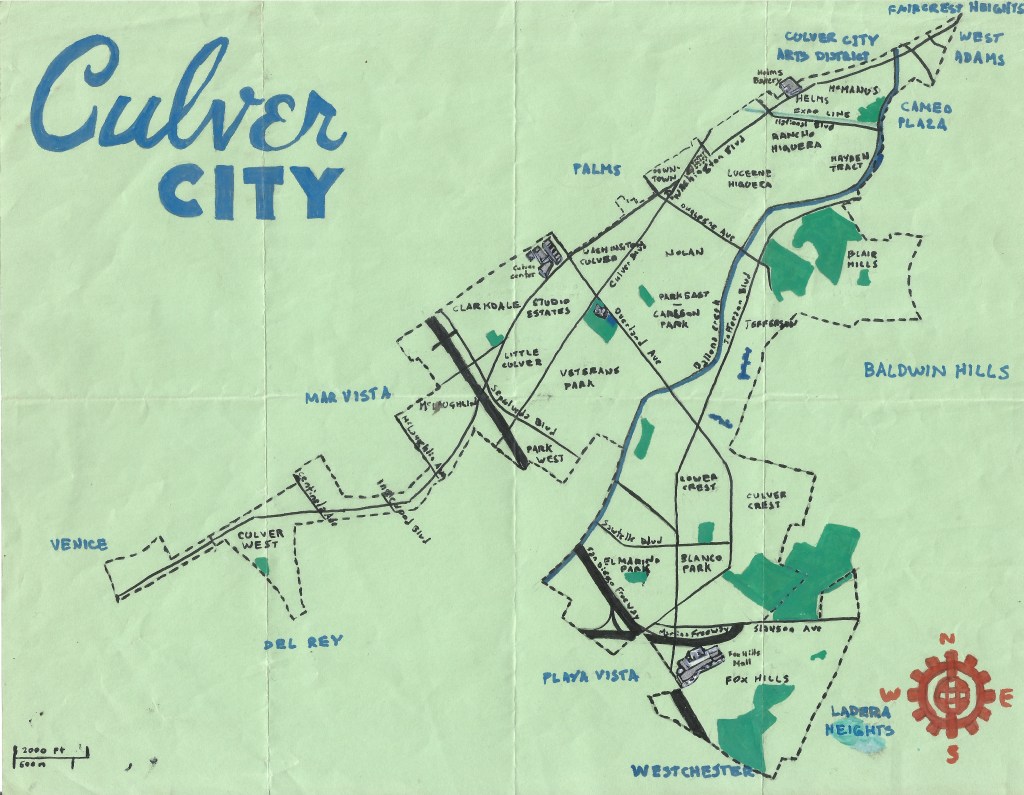
Although Culver City’s area is only about 13 square kilometers, the fact that it’s shaped a bit like a Starfleet Type-2 phaser (the result of 42 strategic annexations) has resulted in its being neighbored by a large number of communities including Baldwin Hills, Cameo Plaza, The Culver City Arts District (which is mostly located outside of Culver City), Del Rey, La Cienega Heights, Ladera Heights, Mar Vista, Palms, Playa Vista, Venice, West Adams (not to be confused with the West Adams Historic District), Westchester, and Windsor Hills.
Culver City is comprised of many neighborhoods of varying sizes. Their borders, names, and even status as neighborhoods aren’t universally agreed upon. Some are descended from old tracts and others are little more than condominium developments. Anyway, in my research, I found the following communities listed by at least one source as a neighborhood of Culver City: Blair Hills, Blanco (aka Blanco Park aka Beverlywood West), Carlson Park, Clarkdale (aka Tellefson Park), Culver City-90066, Culver City Terrace (a trailer court), Culver West, Culver Crest, Downtown Culver City, Emerald Estates (a gated community), Federal Park, Fox Hills, the Hayden Tract, the Helms District (aka the Helms Bakery District aka theHelms Design District), Heritage Estates, Jefferson, Lakeside Villa, Lakeside Village (a gated community), Lindberg Park, Little Culver, Lower Crest (aka Lower Culver Crest), Lucerne, McLaughlin, McManus (Culver City-East), the Nolan Tract, Park East (a gated community), Playa Pacific (a gated community), Raintree (a gated community), Rancho Higuera (aka Higuera), Regent Square, Studio Estates, Studio Village, Sunkist Park (aka El Marino), Tara Hill, Veterans Park (aka Park West), Washington Culver, and Windsor Fountains.
Most of Culver City is comprised of low-profile residential neighborhoods themselves comprised mainly of single-family homes. most of what would likely be of interest to visitors is located within and around Downtown Culver City, the Hayden Tract, the Helms District, or adjacent areas of Los Angeles.
NOT IN CULVER CITY
If Culver City officials and others are unhappy that the community is widely overlooked for its contributions to film, they seem to be just as happy to allow Culver City to be associated with a number of attractions that aren’t actually within the city — as they appear on tour maps and Culver City directional signs. Ivy Substation (and The Actors’ Gang), Carbon, most of the Culver City Arts District, the Hobbit Houses, Media Park, and the Museum of Jurassic Technology are all in Los Angeles — not that that should preclude Culverites’ promotion or enjoyment of them.
ANCIENT HISTORY OF THE AREA
The indigenous people of the Westside were likely the ancestors of the Chumash. They probably arrived around 15,000 years ago. Archeological evidences suggests that the estuary where Ballona Creek meets the Pacific supported the largest Chumash village on the mainland by 6000 BCE. The Chumash, however, abandoned much of the Los Angeles Basin and Orange County after a series of droughts and some 3,500 years ago, the Tongva arrived from the Sonoran Desert far to the east. One of Tongva villages, Saa’anga, was located a little west of present day Culver City, near the mouth of Ballona Creek on Santa Monica Bay. There were other, smaller villages located around the watershed as well.
THE SPANISH ERA
In 1542 Juan Rodríguez Cabrillo claimed what he believed to be the Island of California for country of Spain. In June 1769, Gaspar de Portolà embarked upon an overland expedition from San Diego, stopping near present-day Santa Monica on the 3rd of August. It was the prelude to the Tongva and other Native peoples’ subjugation within the California Mission System.
THE MEXICAN ERA
Mexico began its war of independence with Spain in 1810 and finally achieved it in 1821. That year, the 12.65 km2 Rancho de los Bueyes was granted to Bernardo Higuera and Cornelio Lopez. To the east was Rancho Las Cienegas and Rancho La Cienega o Paso de la Tijera. To the west was Rancho La Ballona. Augustín Machado and Felipe Talamantes had earlier been granted permission to graze cattle on Rancho La Ballona. In 1819, not long after Machado had built an adobe on the banks of the creek, it flooded and washed away the structure (Ballona Creek was paved by the Army Corps of Engineers in 1935 to prevent further flooding). In 1821, Augustín’s brother Ygnacio and Felipe’s son Tom came on board the operation. In 1834, Ygnacio Machado built the Centinela Adobe in what’s now Inglewood.
EARLY AMERICAN PERIOD
Although the US conquered California from Mexico in 1848, the Treaty of Guadalupe Hidalgo ensured that land holdings belonging to Mexicans would be honored by the victors. However, as early as 1857 the land began to change hands – first when Benjamin D. Wilson acquired a portion on foreclosure of an earlier loan to Talamantes. In 1849 Ygnacio had moved to El Pueblo (in Downtown Los Angeles). In preparation for the possibility of the War Between the States coming to California, Camp Latham was established on the southern bank of Ballona Creek (near Jefferson and Overland) and commanded by Brigadier General George Wright. In 1865, La Ballona School was built in what was by then called the Ballona Valley — and Augustín Machado died.
HARRY CULVER AND THE DAWN OF CULVER CITY
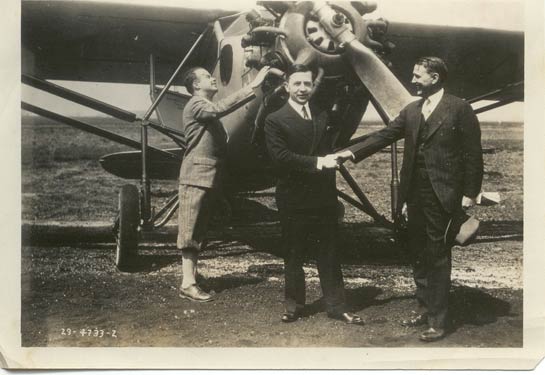
Harry Hazel Culver (born in Milford, Nebraska in 1880) began work as a Southern California real estate developer in 1910, in the employ of Isaac Newton Van Nuys. Van Nuys founded a community named after himself in the San Fernando Valley in 1911. In 1913 Culver announced his plan for his “Culver City” to be located at the intersection of three Pacific Electric Railway lines (the Del Rey, Santa Monica Air, and Venice Short lines) and “3 splendid boulevards” (National, Pico, and Washington).
The planned community — situated in the middle of nowhere but between Los Angeles, The Palms, and Venice of America — was promoted with the slogan “All Roads Lead to Culver City.” Ironically, Culver City’s Main Street was reportedly the shortest “main street” in the world.
In 1914, Culver started the Culver Investment Company. By then the instant community already boasted a train depot, cyclecar plant, and a macaroni factory. Culver City was incorporated on 20 September 1917 with a population of just 530 residents — all white — as the now diverse community was at its inception a whites-only “sundown town.”
THE RISE OF MOTION PICTURES
In the late 1910s, Culver City arose as one of the biggest centers of film production on the west coast (rivaling Edendale, Highland Park, and Hollywood) with the establishment of three major studios —Triangle Film Corporation, Thomas H. Ince Studios, Hal Roach Studios, and their successors — as well as smaller ones (such as Willat Studios). Two of the three studio facilities still exist and one was torn down and replaced with light industrial buildings.
TRIANGLE FILM CORPORATION
Harry Culver met producer-director Thomas H. Ince when he was filming a western near Ballona Creek for the New York Motion Picture Company (who’d opened west coast studio in Edendale) and persuaded him to set up a new operation in fledgling Culver City. In July 1915, Ince — in partnership with Harry and Roy Aitken, and filmmakers D. W. Griffith and Mack Sennett — founded Culver City’s first motion picture company, Triangle Film Corporation. The LA Times almost immediately after published an article titled“Culver City a Movie Center.” By 1917 producer Adolph Zukor had taken control of the studio, which then became Paramount-Artcraft Pictures. In 1919 it was sold it to Samuel Goldwyn. In 1924, his Goldwyn Pictures Corporation studios became the property of Metro Goldywn Mayer.
Today the Greek colonnade still stands although behind it are Sony Pictures Studios and Columbia. In 2012, a 30-meter-high metal rainbow sculpture was added that’s visible from outside the lot.
THOMAS INCE STUDIOS
In 1918 Ince purchased a new lot nearby and established Thomas H. Ince Studios. Meyer & Holler designed the building that now houses Culver Studios — a Colonial Revival structure that was nicknamed “The Mansion.” In 1922, Ince Studios merged with First National Pictures, Inc. In November 1924, Ince was invited aboard William Randolph Hearst‘s yacht, the Oneida, to celebrate his birthday on a trip from San Pedro to San Diego. Other guests included actors Charlie Chaplin, Aileen Pringle, Jacqueline Logan, Julanne Johnston, Margaret Livingston, Seena Owen, Theodore Kosloff, and others. Ince was initially delayed due to his finalizing a production deal with Hearst’s International Film Corporation and the boat set sail without its guest of honor. After concluding business, Ince took a train to San Diego where he boarded the yacht. Three days after his 42nd birthday he was dead. The official version was that he’d grown ill on the yacht and been taken home where he died of a heart ailment but the rumor mill immediately began churning out variations on a story involving infidelity and murder (or accidental shooting). The story was the basis for Peter Bogdanovich‘s film, The Cat’s Meow.
After his death, Ince’s widow Elinor took over Ince Studios for a short time. The Mansion later housed DeMille Studio (the Cecil B. DeMille Theatre was added in 1927), RKO, RKO-Pathé, Selznick International, Desilu, and Laird International Studios. To give a sense of The Mansion’s importance in film — it was there that David O. Selznick and Victor Fleming made the highest grossing film of all time — Gone with the Wind (1939). It was also there that Orson Welles filmed what’s often considered to be the best film of all time, Citizen Kane (1940). When it was Desilu, its sound-stages were used to film television series including The Andy Griffith Show and Star Trek, among others.
HAL E. ROACH STUDIOS
Due to Los Angeles zoning laws, Hal Roach couldn’t expand his studio operations and so moved to movie-friendly Culver City in 1919. His new studio, nicknamed “The Lot of Fun,” was located on Landmark Street— just south of the modern day Culver City Station of the Expo Line. The studio employed one of Culver City’s first professional musical acts — the Hal Roach Studio Orchestra. Hal Roach, of course, famously “created” the comedic Laurel & Hardy duo. To this day, a local branch of the Sons of the Desert (The Worldwide Laurel & Hardy Society) meet weekly at the Culver Hotel. During World War II the facilities were used to produce training films and it came to be nicknamed “Fort Roach.” It was demolished in 1963 and is now memorialized with a plaque (Culver City has more historical plaques than I’ve seen in any other exploration).
CULVER CITY SILENT FILMS
Films made in Culver City during the great era of Silent Film include Luke’s Movie Muddle (1916); Ask Father, From Hand to Mouth, The Hayseed, The Brand, Chop Suey & Co., and The Lone Wolf’s Daughter (all 1919); The Penalty, His Royal Slyness, Haunted Spooks, and An Eastern Westerner (all 1920); Never Weaken, Now or Never, A Sailor-Made Man, I Do, Among Those Present, and Dodge Your Debts (all 1921); and Our Gang and Dr. Jack (both 1922); Safety Last!, Why Worry?, Dogs of War, and The Soilers (all 1923); He Who Gets Slapped, Girl Shy, The Wife of the Centaur, The Snob, Smithy, One Night in Rome, Zeb vs. Paprika, Big Moments from Little Pictures, Sinners in Silk, The Beauty Prize, The Dixie Handicap, Going to Congress, Barbara Frietchie, Accidental Accidents, A Tour of the Thomas Ince Studio, and The Cowboy Sheik (all 1924); The Big Parade, Ben-Hur: A Tale of Christ, The Freshman, The Merry Widow, The Unholy Three, The Monster, Pretty Ladies, The Circle, 1925 Studio Tour, What Price Goofy?, Isn’t Life Terrible?, The Sporting Venus, Zander the Great, Confessions of a Queen, Never the Twain Shall Meet, Daddy’s Gone A-Hunting, Big Red Riding Hood, The Haunted Honeymoon, Cheaper to Marry, and Unfriendly Enemies (all 1925); Bardelys the Magnificent, La Bohème, The Temptress, Tell it to the Marines, 45 Minutes from Hollywood, Along Came Auntie, Long Fliv the King, Exit Smiling, Mighty Like a Moose, Crazy Like a Fox, On the Front Page, Raggedy Rose, Valencia, Exquisite Sinner, For Alimony Only, The Fire Brigade, Monte Carlo, Dance Madness, The Barrier, Wise Guys Prefer Brunettes, and Scared Stiff (all 1926); and The Show, The King of Kings, Love, West Point, Chicago, Annie Laurie, The Second 100 Years , Duck Soup, The Student Prince in Old Heidelberg, Mr. Wu, Putting Pants on Philip, The Red Mill, Hats Off, The Battle of the Century, Why Girls Love Sailors, Sugar Daddies, Love ’em and Weep, Sailors Beware, Slipping Wives, With Love and Hisses, Buttons, The Flag: A Story Inspired by the Tradition of Betsy Ross, Olympic Games, Baby Brother, The Callahans and the Murphys, Tillie the Toiler, The Honorable Mr. Buggs, Adam and Evil, Are Brunettes Safe?, and Lovers? (all 1927).
THE HEART OF SCREENLAND TODAY
Culver City is still very active in film production. Normally I try to mention all of the films shot within a community but, at well over 11,000 there are far too many for a blog entry. If you’d like to peruse the IMDB list (sorted by date), click here.
To further emphasize how important Culver City’s contribution has been I’ll list just a few films made in Culver City have helped define, erm, Hollywood, including: King Kong (1933), The Thin Man (1934), The Good Earth (1937), A Star is Born (1937), The Wizard of Oz (1939), Rebecca (1940), It’s a Wonderful Life(1946), Singin’ In the Rain (1952), Oklahoma! (1955), The Night of the Hunter (1955), and Forbidden Planet (1956). It’s also where television shows like The Amos ‘n Andy Show, The Adventures of Superman, The Life of Riley, The Abbott and Costello Show, The Great Gildersleeve, Lassie, The Thin Man, Gunsmoke, The Green Hornet, Gomer Pyle, The Man from U.N.C.L.E., Little House on the Prairie and many others were filmed.
Today Culver City is home to Sony Pictures Entertainment, the community’s largest employer. It’s the birthplace of film figures including Charles Herbert, Dee Dee Davis, Drew Barrymore, Gwen Verdon, Helen Hunt, and Michael Richards. Finally, it’s also home to many production companies, talent agencies, studios, distribution companies, consulting firms, &c all having to do with film production.
EXPLOSIVE GROWTH
The 1920s were the time of Culver City’s greatest population growth — the population increased over 1000% from just 503 to 5,669 during the decade. Prohibition, which lasted between 1919 and 1933, was somewhat ignored around Culver City and supposedly the race tracks, speakeasies, and nightclubs along Washington Boulevard were the reason Culver City annexed the area in 1924. During the Prohibition era Culver City was home to a thriving nightlife based around The Green Mill (which became Sebastian’s Cotton Club — where Lionel Hampton began his career with Les Hite), King’s Tropical Inn (established in 1924), Barton’s,Casa Mañana, Ford’s Castle, Frank’s Bar and Grill, The Hoosegow, The Hot Spot Café, and Moonlite Gardens. As a result, Culver City (along with Venice and Vernon) acquired a reputation as a quite happening and slightly lawless place. Culver City Council finally took action to prohibit gambling in 1928.
HOTEL HUNT – CULVER HOTEL
In 1924 the six-story flatiron skyscraper (the sky was lower in those days) Hotel Hunt was completed. Although no longer the tallest building in Culver City, it’s still widely visible and is the most iconic structure in the community.At some point early on it was re-named the Culver Hotel. From 1924 until 1933 it housed Harry Culver’s offices. It was later owned by John Wayne and in the past housed many movie stars including Buster Keaton, Clark Gable, Greta Garbo, Joan Crawford, Red Skelton, and Ronald Reagan. Before it was placed on the National Register of Historic Places in 1997, it was actually in danger of being demolished.
CULVER CITY SPEEDWAY

From 1924 until 1927, the Culver City Speedway hosted auto races at a facility located near Overland Avenue and Culver Boulevard.
THE MERALTA
The Meralta was opened in 1924 by Pearl Merrill and Laura Peralta (who combined their family names to create the theater’s name). The first film shown at the Will Rogers-hosted premier was Del Andrews‘s film, The Galloping Fish. It closed in 1983 and was demolished the following year — replaced with a shopping plaza.
CULVER CITYBUS
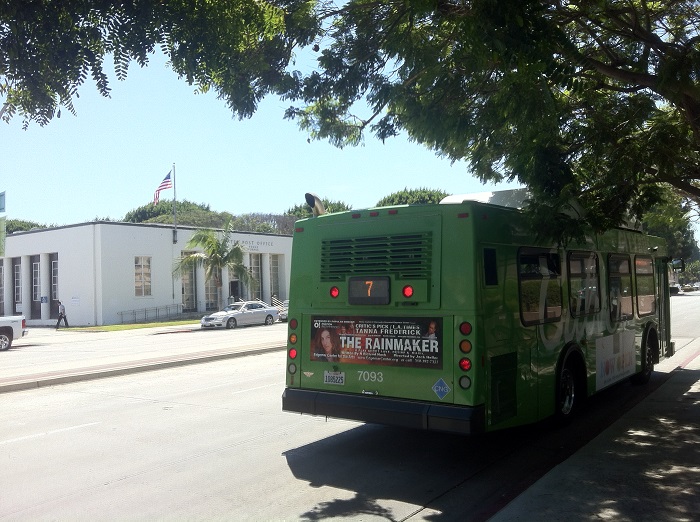
Culver CityBus was founded along with Santa Monica’s Big Blue Bus in 1928 — they’re the oldest municipal transit companies in the state. In 1997 a new Transportation Facility (with big urn sculpture in front) opened.
At 2011’s Government Fleet Conference, Culver CityBus was voted the 5th best fleet in North America. The regular fleet buses are green and the rapid buses are gray. In addition to Culver City its seven lines serve Century City, Mar Vista, Marina del Rey, Palms, Venice, Westchester, West Los Angeles, and Westwood — covering an area of almost 70 km2.
ROLLERDROME
Rollerdrome opened in 1928 at the present location of Tellefson Park. An organ was added in 1929 and the house organist was Carl Osterloh. It was demolished in 1970.
THE CITIZEN
The Citizen Building was constructed in 1929 (the same year the older Culver City Star News merged withThe Venice Vanguard). It served as the new home of The Citizen Publishing and Printing Company, first established in San Francisco in 1923 by Eugene Donovan before relocating to Southern California. The building, which mixes elements of Art Deco and Beaux Arts, was designed by Orville E. Clark and is eye-catching if a bit difficult to do justice to with photographs (on account of trees and traffic). In 1987, the Citizen Building became the first structure in Culver City to be placed on the National Register of Historic Places. Donovan’s paper, The Citizen, actually ran a contest to rename Culver City. Entries included“Cinema City” and “Filmville” but obviously, Culver City’s name remained the same after Hollywood and Culver City buried the hatchet at Grauman’s Chinese Theatre.
THE GREAT DEPRESSION
Thanks in large part to the film industry and new developments, Culver City fared relatively well during the Great Depression. The city adopted a municipal seal with the words “The Heart of Screenland” in 1936. In 1937 the city changed its slogan to “Culver City, Where Hollywood Movies Are Made.” On 6 June 1937, a measure was actually passed to change Culver City’s name to “Hollywood” at which point Los Angeles responded by granting official recognition to and establishing official borders of the Hollywood neighborhood. There were also several other key industries established in and around the city. A greyhound racing track was opened by Culver City Kennel near Lincoln and Washington boulevards. Nonetheless, after the boom of the 1920s, population growth slowed tremendously even with the annexation of McManus Park.
HELMS BAKERY
Paul Helms‘s Helms Bakery was established on the border of Culver City and Los Angeles (in what’s now known as the Helms Bakery District) in 1931. In 1932, during the Olympics, Helms Bakery supplied bread to the Olympic Village in Baldwin Hills. For more than forty years its fleet of delivery drivers brought bread “daily at your door” until 1969, when bakery closed shop. In October 2013, it was announced that chefs Sherry Yard and Sang Yoon plan to revive the bakery later in the fall.
HUGHES AIRCRAFT COMPANY
From 1932 to 1985, the Culver City Airport and Hughes Aircraft Plant operated just outside of Culver City. Though technically located within Los Angeles; the name, proximity, and jobs it provided for Culverites make it worthy of a mention here, I think.
ST. AUGUSTINE CATHOLIC CHURCH
In 1883, the Figueroa family donated land for the construction of St. Augustine’s, the first church in what became Culver City. It was completed in 1887. The new Franco-Gothic church was dedicated 1936.
HOLY CROSS CEMETERY
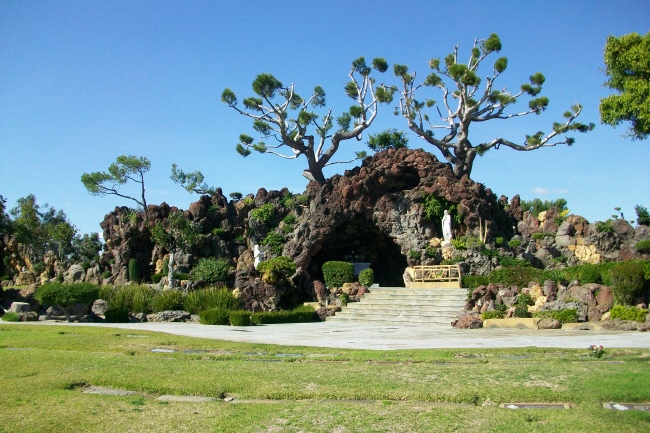
The Roman Catholic Holy Cross Cemetery opened in 1939. An area known as “The Grotto” is, as they say, the final resting place of many celebrities including Audrey Meadows, Bela Lugosi, Bing Crosby, Charles Boyer, Dennis Day, Edmond O’Brien, Fred MacMurray, Henry Hathaway, Jack Haley, Jackie Coogan, Jimmy Durante, Joan Davis, Joe Flynn, John Candy, John Ford, Lawrence Welk, Loretta Young, Louella Parsons, MacDonald Carey, Mario Lanza, Mary Astor, Mary Frann, Pat O’Brien, Ray Bolger, Richard Arlen, Rita Hayworth, Rosalind Russell, Sharon Tate, Spike Jones, Vince Edwards, and ZaSu Pitts among others.
CHANGING DEMOGRAPHICS
The 1940s saw both increasing diversity within Culver City’s population and at the same time, the population growth rate began to increase again — although it nonetheless nearly reached 20,000 by the decade’s end. Prior to the 1930s, most Jewish Angelenos had lived in the Eastside in neighborhoods like Brooklyn Heights, City Terrace, and East Los Angeles. Toward the end of that decade and into the 1940s, many moved west to Hollywood, Midtown and especially the Westside. Culver passed away on 17 August, 1946 — two years before the US Supreme Court banned segregation, which even more radically changed Culver City’s complexion although restrictions against multiple-family housing helped retain an economic segregation.
B’NAI B’RITH MEMORIAL PARK (HILLSIDE MEMORIAL PARK CEMETERY)
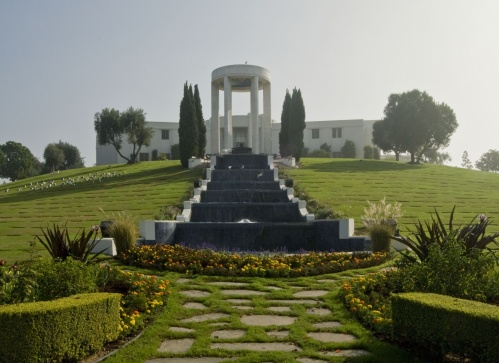
B’nai B’rith Memorial Park opened in 1941 just beyond the borders of Culver City. It was renamed Hillside Memorial Park Cemetery in 1950. The Al Jolson Memorial Shrine was designed by great Los Angeles architect, Paul R. Williams, in 1954. The cemetery was annexed by Culver City in 1964. It contains the earthly remains of Allan Sherman, David Janssen, Dinah Shore, Eddie Cantor, George Jessel, Jack Benny, Jeff Chandler, Lorne Greene, Michael Landon, Milton Berle, Moe Howard, Shelley Winters, and Vic Morrow among others.
CULVER THEATRE – KIRK DOUGLAS THEATRE
The beautiful, 1640-seat, Streamline Moderne Culver Theatre opened in 1946. At some later point it was regrettably divided into a three-screen theater before being gutted in 1994. In the years since it’s been renovated and transformed into a performing arts center and playhouse known now as the Kirk Douglas Theatre.
STUDIO DRIVE-IN
The Studio Drive-In opened in 1948. It was featured in several films including Grease and Pee-Wee’s Big Adventure. It was closed in 1993 before being demolished in 1998 and redeveloped as The Classics at Heritage Park and Eras Center. (To read about still extant SoCal drive-ins, click here).
TRAINS OUT, CARS IN
The 1950s were a decade of increasing development. Passenger rail service ended in 1953 with the discontinuation of the Pacific Electric Railway line and at the same time car dealerships proliferated — as did bowling alleys. In 1951, the annual Fiesta Ballona began — an outgrowth of the earlier Tom Sawyer Days festivities which had begun in the 1930s. In 1953, the Temple Akiba opened to serve the community’s growing Jewish population.
CULVER CENTER (AND SHIPS)
The Culver Center shopping center opened in 1950, one of Southern California’s first malls. In its honor, Hacienda Street was renamed Culver Center Street. The first Ship’s coffee shop opened there in 1956. Fearing that Culver Center’s growing dominance could spell the end for Culver City’s smal downtown, the city council refused to allow May Company to open a shop in the mall.
VETERAN’S MEMORIAL BUILDING
Veteran’s Memorial Building also opened in 1950, a year after Exposition Park was renamed Veteran’s Park. Its most eye-catching feature was its Tourist Tower, which offered tourists a glimpse of the nearby studio’s back lots and pretty stunning views — although its been closed to visitors for several decades now. The current Lethbridge-Garden Room was then home to the Tower Restaurant. In front of the center is a fountain and sculpture titled Film Strip-USA, dedicated in 1984 to what the plaque calls “The Motion Picture Capital of the World.”
NIGHT WATCH
Even less recognized than Culver City’s contribution to film is its contribution to reality programming — although it likewise should be otherwise. In 1954, the great (if obscure) Night Watch debuted on CBS. It wasn’t the first reality show — that would be Candid Camera which debuted in 1948. But whereas the latter was nothing more than the sort of silly prank show still popular around the world, the latter was something more interesting. Night Watch was developed and hosted by Culver City police reporter Donn Reed at a time when audiences were leaving radio for TV and radio responded by offering realism (and perhaps voyeuristic exploitation) that the family boob tube couldn’t. Each episode involved Reed riding with Sgt. Ron Perkins from 6:00 pm till 2:00 am and recording everything. It ended its short run in 1955 but all 48 episodes still exist and are fascinating glimpses of Culver City life in the 1950s.
CULVER CITY IN THE 1960s
In the 1960s, although Culver City continued to annex more territory (including, notably, Fox Hills), the population growth rate again dropped, as it has in most of the decades since. In 1964, Culver City established its first Sister City relationship with Uruapan, Mexico. Though Culver City remains comprised mostly of single family homes it was during this time that the first apartments and condominiums were constructed. The first condo complex, Studio Village Townhouses, was completed in 1965. In the next decade, more studio properties would be sold off and redeveloped into residential complexes and shopping centers.
COMPETITION MOTORS
In 1961 entrepreneur and race car enthusiast John von Neumann hired Paul R. Williams to design the new headquarters for his Competition Motors on in Culver City. Von Neumann was responsible more than any other individual for popularizing Volkswagen in the US. Consider this — whereas in 1953 there had been no American dealers of the car, by 1962 von Neumann alone had opened 57 Volkswagen dealerships in the country. By 1964, Competition Motors had moved out, having outgrown the facility. I’m not sure when it happened but it Williams’s beautiful building was demolished.
MEDITATION AND MALLS
I’m sure a great deal more of note happened in Culver City in the 1970s than what I’m writing about but that’s all I’ve got for now.
THE JULIAN DIXON LIBRARY AND MEDITATION GARDEN
In 1974, another of Culver City’s sister cities, Kaizuka, Japan, created a meditation garden in front of the Culver City Library. On the day that I visited it I discovered that the garden it’s relatively inaccessible due its being surrounded by a fence. What’s more, no water was running in the stream and the mill wheel was motionless. Further encumbering any efforts at meditation was the loud and seemingly endless stream of traffic behind me on Overland Avenue. Meanwhile the interior of the Culver City Julian Dixon Library, as it’s now known, proved much more peaceful.
FOX HILLS MALL
Fox Hills Mall opened in 1975. The Gruen Associates-designed mall was the first three-story shopping complex to open in California. It was purchased by Westfield in 1998 and renamed Westfield Shoppingtown Fox Hills (The “Shoppingtown” was dropped in 2005). Jonathan Gold wrote a complimentary review of its “dining terrace” (food court) for the LA Weekly shortly before leaving that publication. It’s currently officially known as Westfield Culver City.
DECLINE AND REDEVELOPMENT
The 1980s were marked by the AIDS crisis, Deinstitutionalization, Crack Wars, Gang Wars, and the Central American Refugee Crisis. It almost proved to be too much for the city that had weathered the Depression with comparative ease. The city’s hopes for renewal were pinned on the destruction of The Meralta theater and the replacement of it with the Meralta Plaza office building.
FILMLAND CORPORATE CENTER – SONY PICTURES PLAZA
In 1986, the Filmland Corporate Center was completed (now Sony Pictures Plaza) — another of several projects helmed by the Culver City Redevelopment Agency within a short period. The pink granite pyramid-ish atrium portrayed the Wolfram & Hart offices on TV’s Angel. Interested visitors can tour the studio, with daily tours starting here.
CORPORATE POINTE
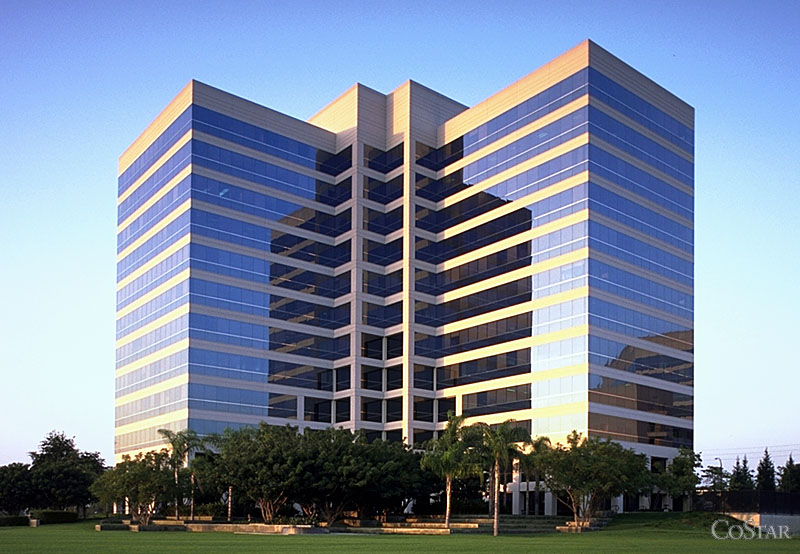
In 1989, the three tower complex of Corporate Pointe was completed — the tallest building is twelve stories and its construction prompted “slow growth” advocates to react by successfully lowering Culver City’s height limit to just 56 feet in 1990.
SONY – FILMED IN CULVER CITY
Culver City’s comeback continued in the 1990s. Sony bought MGM‘s old studio in 1990 and established itself as the dominant economic force in town. Beginning with 1991’s films Bugsy and Hook, Sony films shot in Culver City stated in their credits that they were “Filmed in Culver City.” A new City Hall was dedicated in 1995, behind the mock facade of the original city hall — meant to suggest a film set.
Sony Pictures Imageworks opened in 1992. This is where the visual effects and digital animation that characterize mainstream American film happens.
CULVER CITY IN THE 21st CENTURY
In 2003, NPR West moved to Culver City. The Art Deco-styled (at least the exterior) Pacific Culver Stadium 12 multiplex opened in 2003. The Expo Line returned rail service and developers clamored to construct mixed-use transit-oriented developments. Around the same time a tribe of people calling themselves “foodies” starting visiting it. In 2009, Culver City won Curbed LA‘s Curbed Cup — basically their annual community popularity contest.
GETTING TO AND AROUND CULVER CITY
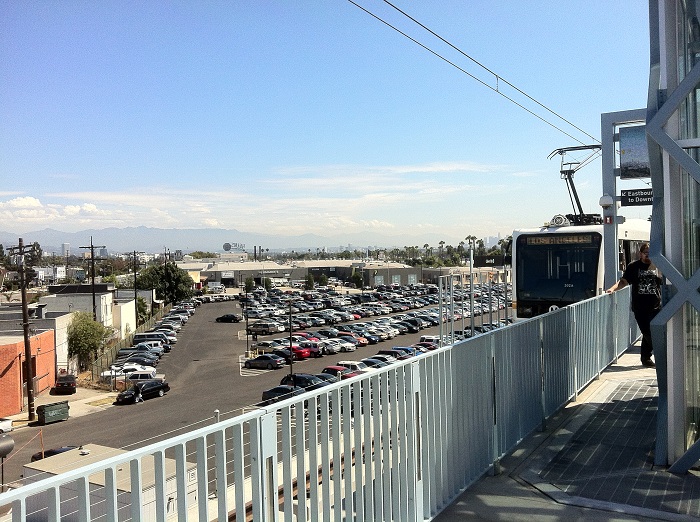
As already mentioned, Culver City is home to the excellent Culver CityBus system. In 2012, after 60 years without it, passenger rail service returned to Culver City (and the Westside) with the arrival of the Expo Line (which I explored both the completed section of, and the under-construction section of, for my KCET column, Block By Block). Before too long the train will go all the way to the Pacific Ocean (although it shouldn’t be confused with the “Subway to the Sea,” which is scheduled to take several decades to get there).
Parallel to the Expo Line along most of its length is a bike path. There’s also the Ballona Creek Bike Path that runs about eleven kilometers from near the eastern edge of Culver City to the Ballona Creek Estuary and Wetlands along Santa Monica Bay. Finally, there’s the 3.4 km Culver Boulevard Meridian Bicycle Path and of course, bikes can ride on all city streets as well.
Additionally, Culver City is served by two Los Angeles Metro Bus lines (33 and 733), and Santa Monica’s Big Blue Bus. And if you’re the walking time, as I am, it’s quite walkable. Walkscore gives Culver City a score of 79. The 90232 zip code, which includes most of the city’s attractions, gets an 84 — only one point lower than New York City and San Francisco — the current #1 and #2 on the list.
If you want to stay overnight in Culver City there’s of course the famous and highly-rated Culver Hotel as well as (in descending order of current Yelp ratings) Culver City Travelodge, Jasmine Hotel, Ramada Culver City, Sunburst Motel, Half Moon Motel, Astro Motel, Deano’s Motel, and West End Hotel.
CULVER CITY EATS
One of my absolute favorite things about Culver City is the diversity of the restaurant scene. There are restaurants serving Asian Fusion, Brazilian, British, Burmese, Creole, Cuban, Ethiopian, French, Greek, Hawaiian, Indian, Indonesian, Italian, Japanese, Mandarin, Mexican, New American, Pakastani, Salvadoran, Taiwanese, Thai, Vegetarian, and Vietnamese cuisine, among others.
Oddly, on the day that I explored for this blog entry and despite the amazing choices available, every single person I saw at every single sidewalk café was grazing on salad. At first I thought it was some sort of special holiday or maybe I’d walked onto the set of a commercial for lettuce or something but I think it was actually an indication of the importance of “the Industry” actually; these people were quite likely “doing” lunch (in the parlance of schmooze).
There have been a couple of hiccups with the food explosion. Until 2011 there was Westside Food Truck Central and the Culver City Food Truck Fest which may or may not return after permits are sorted out. In the past I’ve enjoyed meals at Café Brasil, Empanada’s Place, and shojin. I have also heard a lot of raving (and almost just as much dissent) about Tito’s Tacos — but have yet to check it out — suspecting (even though I should know better) that its most ardent fans have likely never crossed the Los Angeles River to dine in the Eastside.
If you’d like to learn how to cook, you can attend Culver City’s New School of Cooking. You can get restaurant supplies from Surfas, which has been around since 1937. The Culver City Farmers Market takes place downtown every Tuesday from 3:00 to 7:00. It was actually setting up as I left the area and headed west, stopping at and enjoying a lunch at Samosa House (East).
Other restaurants include A-Frame, Akasha, All India Flavor, Aramark, Bada Bing Italian Grill, Bawarchi Indian Kitchen, Bellagio,Big Fat Pita, Big Tomy’s, Bistro Laurent, Bottlerock, Brunello Trattoria, Buffalo Wings & Pizza, Café Allegro, Café Creole, Café Laurent, Café Nagomi Truck, Café Surfas, California Roll & Sushi, Campos Tacos, Cappriotti’s, Cilantro Fresh Mexican Grill, Cinco de Mayo, Creme de la Crepe, The Culver Studios Commissary, Dear John’s, Delhi Biryani House, Dios Union Libertad, Don Felix Meat Market, Dragon Restaurant, E K Valley Restaurant, Ekkamai Thai Restaurant, El Baron Restaurant and Night Club, El Jacalito, El Rincon Criollo, El Rio Bravo Restaurant, El Super Taco Deluxe, Extreme Pizza, 5i Indochine Cuisine, Food Square, Ford’s Filling Station, Fresh in the Box, Fuji Wok & Sushi, Gaby’s Express Mediterranean Café, George Petrelli’s Steak House, Good Eatz Café, Grand Casino Bakeries,Great Khan’s Mongolian Barbeque, Green Peas, Green Truck, Grey Block Pizza, Hamakaze Sushi Izakaya, Honey’s Kettle Fried Chicken, Huddle West Café, India Sweets and Spices,Industry Café & Jazz, Jackson Market, Jasmine Market, Jerry’s Market, Johnnie’s Pastrami Restaurant, Joyce’s Pizza & Submarine Sandwiches, JR’s Barbeque, K-ZO, Kabab Bistro, King’s Kabob, L’Epicerie Market, La Dijonaise Café et Boulangerie, LA Spice, LaRocco’s Pizzeria, Libra Brazilian Steakhouse, Lucille’s Smokehouse Bar-B-Que,Lunch, Lukshon, LYFE Kitchen, M Café de Chaya, Mandarin Dish, Marin Company Steak & Spirits, Martini’s Italian Deli & Pizza, Maxwell’s Café, Meet in Paris, Metro Café, Mi Ranchito, Mongrill Gourmet Mongolian BBQ, Muddy Leek, Mykonos Greek Grill, Native Foods Café, Novocento Pasta & Grill, 101 Noodle Express, Outdoor Grill, Panda Thai Kitchen, Patio Café, Pho Show, Pinches Tacos, Pitfire Artisan Pizza, The Point,Polentoni, Public School 310, Qdoba Mexican Grill, Ramen Yamadaya, The Restaurant at the Culver Hotel, Rising Hearts, Rita Hayworth Dining Room, Rocco’s Tavern,Rockenwagner Bakery, Roll ‘n Rye, Royal Chinese Food & Donut, Rush Street, Rutt’s Hawaiian Café,S & W Country Diner, Sage Oragnic Vegan Bistro, Sake House by Hikari, Sarku Japan Sushi Bar, Sharlimar Cuisine of India, Shikibu Sushi & Pastry, Signature Burger, Signature Café, Smashburger, Sony Pictures Plaza Cafeteria, Sorrento Italian Market, Sushi Karen Japanese Restaurant, Sushi Mashiko, Swanya Thai Cuisine, Taqueria Estilo, Tender Greens, Trimana, Tub’s Fine Chile, Ugo Café, Vera Pizza Napoletana, Victor Jr’s, Viet Gourmet Express, Villa Italian Restaurant, Waterloo & City, Wildcraft Sourdough Pizza, The Wood Café, Yen Sushi Lounge and Karaoke, Zam Zam Market, ZZ Truck, and 041 Bacaro.
CULVER CITY DRINKS
For the thirsty, there are a few places to wet one’s whistle in Culver City including Alibi Room, Apothecary Café, Backstage Bar & Grill, The Bar at the Culver Hotel, Bird Pick Tea & Herb, Bottlerock, Caffe Carpe Diem, The Cinema Bar, City Tavern, Coffee Buna, Cognoscenti Coffee, Conservatory For Coffee Tea & Cocoa, The Corner Door, Cozy Inn, Al Alteno Bar, Espresso Primo, George’s Coffee Shop, Island Monarch Coffee, Joxer Daly’s, King’s Café, The Redd Collection, The Rumor Mill, Scarlet Lady Saloon, Seventy7, The Spot Café & Lounge, Studio Bar, Tanner’s Coffee Co, Tattle Tale Room, and Ugo Wine Bar.
CULVER CITY MUSIC SCENE
There have been at least a couple of “city songs” composed for Culver City. In 1967, Doris Hechingercomposed “Culver City.” In 1985, Marilyn Freiden Clark composed, “Our Culver City.” The Culver City Symphony Orchestra has performed since 2000. It was also formerly home to Bratton Music Publishing Company (see below)

Culver City is the birthplace or home base of several performers including (I think) include Aerial Stereo, Amy’s Crusade, Andy Shigekawa, Anonymoose and Young Cookie, APEX, Aphex Wolf, The Bad Bad Things, Becky Stark, bikos, The Black Heartthrobs, The Bomb Camarillos, Bronwen Jones, Chorus Babblebones, Chris Clarke, Co Wave, color cycle, Confucius is Confused, Cori Jacobs, Debbie Hennessey, DJ Max Factor, Early the MC, Endor, Evyn Charles, Gorgonized Dorks, Ibn Gold,Ikon, Infernal Assault, Michael Nhat, Puppets, Rocky George (of Pap Smear, Suicidal Tendencies, 40 Cycle Hum, Cro-Mags, and Fishbone), Strings By Reiko, Tibay, TonyMoss, TVghettoblasterman,Vedad M, Ven Olac, VerBS, Yeren, and XPlatter. I’m not sure if he was born there but KXLU‘s DJ Ned Learner is widely associated with Culver City.
Local music stores include Boulevard Music (who host the Boulevard Summer Music Festival), Culver City Music Center (which offers music lessons), and Latin Music Warehouse. Furthermore, Beats By Dre‘s headquarters are there, the Harvest Festival of Dulcimers takes place there, and Industry Cafe & Jazz features live music and poetry open mic nights. There are also almost certainly several music studios although the only one that I noticed were Musicians Choice Studio and Sound Space Lab.
ART IN CULVER CITY (AND THE CULVER CITY ARTS DISTRICT)
In a 2007 New York Times piece titled “In Culver City, Calif., Art and Food Turn a Nowhere Into a Somewhere” the writer refers to Culver City as a “nascent Chelsea” — comparing Los Angeles to New York is the paper’s highest honor. Anyway, the article mentions The Actor’s Gang, Blum & Poe, HD Buttercup, The Mandrake Bar, and LAXart Gallery — not one of those happens to be actually in Culver City, mind you. That’s right, the arts area often referred to as the Culver City Arts District is almost entirely located within Los Angeles and not Culver City.
The narrow strip of the Arts District along Washington that actually is within Culver City is home to quite a few galleries such as Cardwell Jimmerson Contemporary Art, Century Guild, Corey Helford Gallery, Fresh Paint, George Lawson Gallery, Indie Collective, Kinkead Contemporary, Koplin Del Rio Gallery, LeBasse Projects, Mark Moore Gallery, Prohibition Gallery, Roberts & Tilton, Susanne Vielmetter Los Angeles Projects, Taylor De Cordoba, Thinkspace Gallery, and Washington Reid Gallery.
Other art galleries that I’m pretty sure are in Culver City include Bradford Stewart, Marlene Louchheim,The Pop Studio, Royal/T, Subspace Art, Teale Street Sculpture Studio & Gallery, Whole 9 Gallery, and WWA Gallery. To see a map of galleries in the Culver City Arts District (both within and without Culver City) click here.
There’s plenty of public art too — maybe too much. In 2009, construction workers mistook Jebediah Caeser‘s Gleaners Stone for construction materials and removed it. In my travels I noticed Harold L. Pastorius‘s Emerald Rings, The Lion’s Fountain, and De L’Esprie‘s Path of Life (plus a lot of murals).
Click here to see a map of public art in Culver City or here to see LAist‘s piece on a Culver City public art scavenger hunt.
HELMS BAKERY DISTRICT
Helms Bakery closed in 1969 and in 1974 it was purchased by Walter N. Marks. It’s now home to several restaurants and home décor places. It also hosts the Culver City Patchwork in which local artisans peddle their wares. The old bakery actually straddles the Culver City and Los Angeles border. At the southern end, La Dijonaise Café et Boulangerie and Lukshon are in Culver City. At the northern end, Father’s Office is not. The distinction isn’t totally obvious from street level although Helms Avenue becomes the pedestrian-only Helms Walk as it enters Culver City. The Helms District has also hosted LuckyRice — one of the region’s increasingly popular night markets — and the Sunset Cinema summer outdoor film screenings.
HAYDEN TRACT
One of the other interesting neighborhoods of Culver City is the Hayden Tract, the city’s former industrial district. Now most of them are home to offices by and studios for architects, graphic designers, new media types, software engineers, &c. Some of the newer and altered buildings in the area serve as calling cards for their creators (especially Eric Owen Moss, who should be proclaimed the Hayden Tract’s honorary mayor) such as the Beehive, the Box Building, the Broadway Building, the Gateway Art Tower, the Samitaur Tower, the Stealth Building, and the “What Wall” Building. It’s one of the most eye-catching collections of post-modern buildings in Los Angeles County.
CULVER CITY PARKS
Culver City is home to several parks. On one 4th of July I went with some friends to Baldwin Hills Scenic Overlook or Culver City Park. From up on the hill we could see the entire Westside and noticed that nowhere were there any fireworks. Thoroughly nonplussed a couple of us headed what turned out to be south, discovering in South LA that yes, there are people west of Western who like fireworks displays. Culver City is also home to Blair Hills Park, Blanco Park, The Boneyard, Carlson Park, Culver City Skate Park,Culver West Alexander Park, El Marino Park, Fox Hills Park, Lindberg Park, and Syd Kronenthal Park.
OTHER SITES TO SEE
If you like museums there’s the Mayme A. Clayton Library & Museum (focused on African-American memorabilia) and the Wende Museum (focused on Soviet and East German art). There are several book stores including Agape Quiet Mind Bookstore, Arcana Books on the Arts, Archangel Michael Orthodox Bookstore, Pauline Books and Media, and Vagabond Books. Culver City is also home to Blind Barber (a barbershop and lounge), the Brasil Brasil Cultural Center, Culver Ice Arena, Fox Hills Golf & Banquet Center, A Magic Forest (a children’s space), and STAR Eco Station (an environmental education and wildlife rescue center).
CULVER CLUBS
If you want to get involved in Culver City, there have been a great deal of civic organizations and clubs. The Culver City Westside Barbell Club seems to be inactive but the Culver City Woman’s Club (established in 1920), Culver City Chamber of Commerce (established in 1921), Culver City Lions Club (established in 1923), Rotary Club of Culver City (established in 1930), Culver Palms YMCA (established in 1944),Culver City Historical Society (established in 1980), Kiwanis Club of Culver City, Optimist Club of Culver City, and Culver City Garden Club seem to all still be around (as are many others). Teens can utilize the Culver City Teen Center (with a parent’s signature).
FURTHER READING ON CULVER CITY
Check out Julie Lugo Cerra‘s (Culver City’s honorary historian) Culver City,Culver City Chronicles, Culver City: The Heart of Screenland, and Movie Studios of Culver City (the latter co-written by Marc Wanamaker). For current events there’s the Culver City Times, Culver City Patch, Culver City News Blog, and Culver City Crossroads. For further viewing, look for Visiting… With Huell Howser “Episode #1804 – Culver City“ (classic Huell begins around 12:40).
Support Eric Brightwell on Patreon

Eric Brightwell is an adventurer, essayist, rambler, explorer, cartographer, and guerrilla gardener who is always seeking paid writing, speaking, traveling, and art opportunities. He is not interested in generating advertorials, cranking out clickbait, or laboring away in a listicle mill “for exposure.”
Brightwell has written for Angels Walk LA, Amoeblog, Boom: A Journal of California, diaCRITICS, Hidden Los Angeles, and KCET Departures. His art has been featured by the American Institute of Architects, the Architecture & Design Museum, the Craft Contemporary, Form Follows Function, Los Angeles County Store, the book Sidewalking, Skid Row Housing Trust, and 1650 Gallery.
Brightwell has been featured as subject in The Los Angeles Times, VICE, Huffington Post, Los Angeles Magazine, LAist, CurbedLA, Eastsider LA, Boing Boing, Los Angeles, I’m Yours, and on Notebook on Cities and Culture.
Brightwell has been a guest speaker on KCRW‘s Which Way, LA?, at Emerson College, and the University of Southern California.
Brightwell is currently writing a book about Los Angeles.
You can follow him on Ameba, Duolingo, Facebook, Goodreads, Instagram, Mastodon, Medium, Mubi, the StoryGraph, and Twitter.



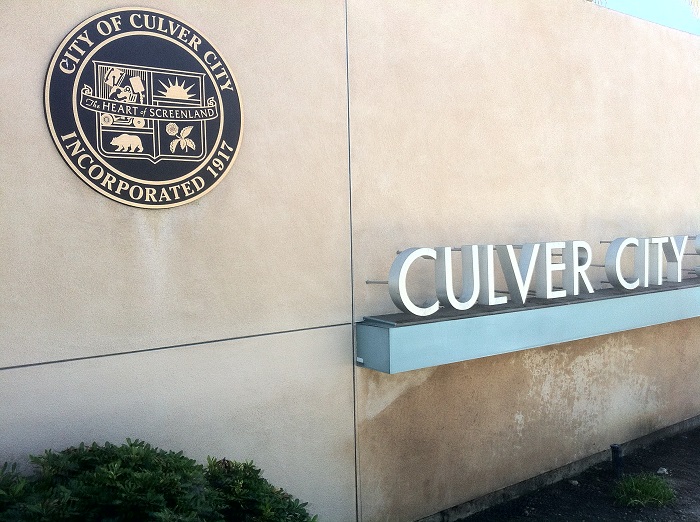
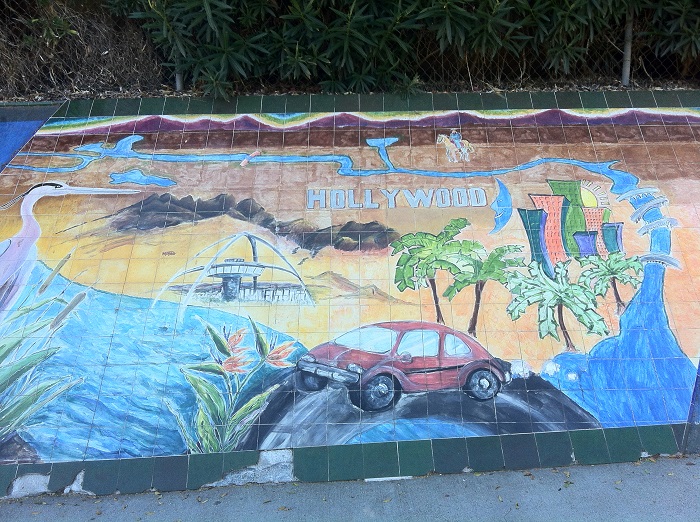
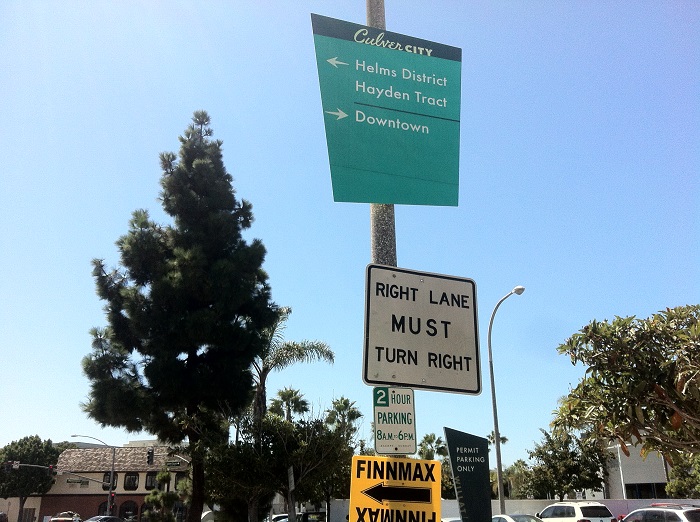
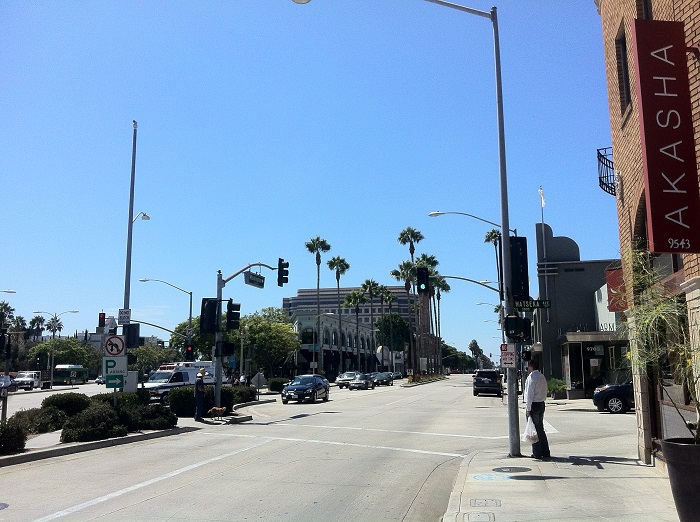
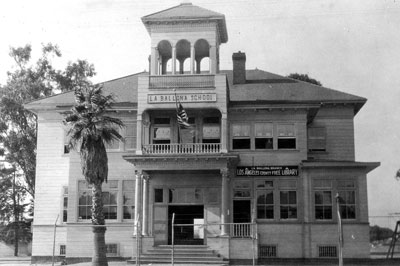
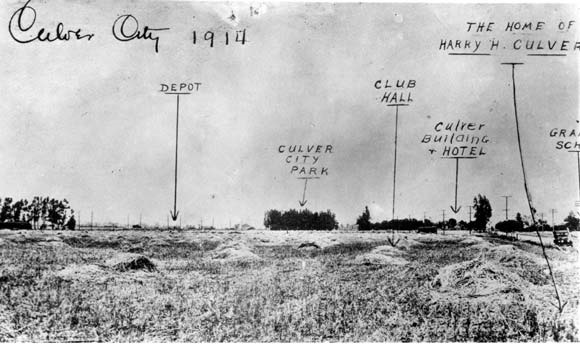
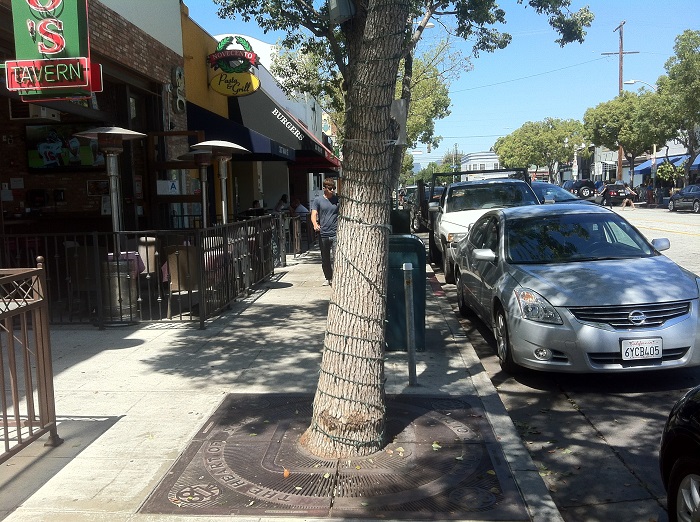

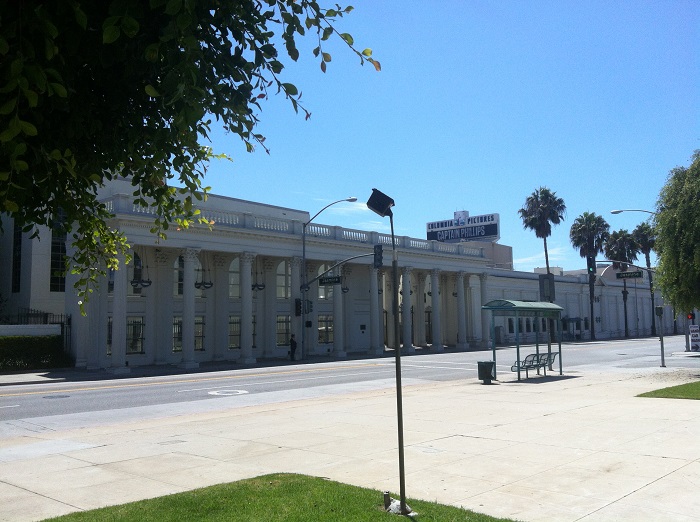

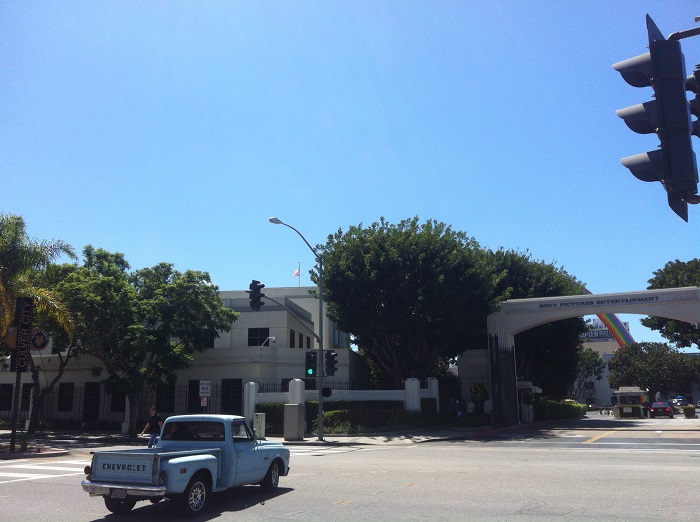

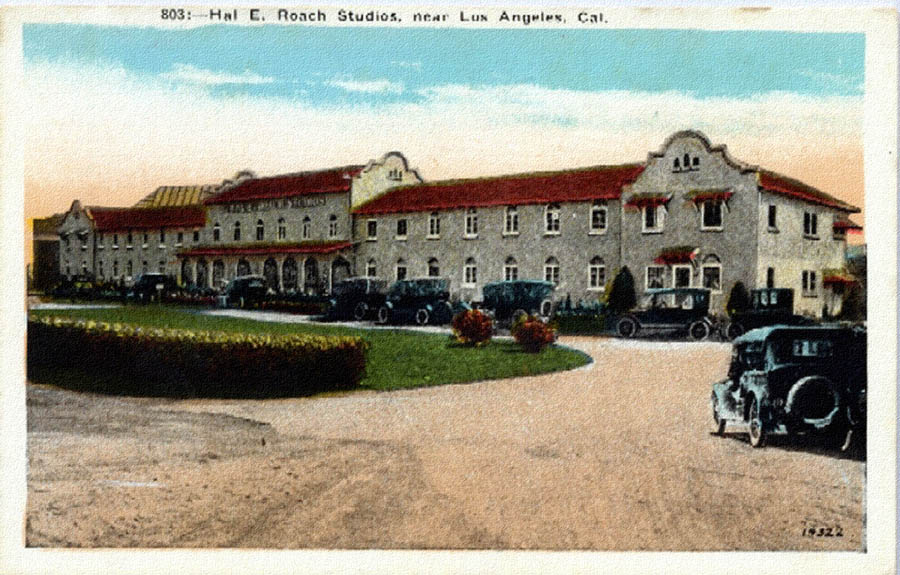
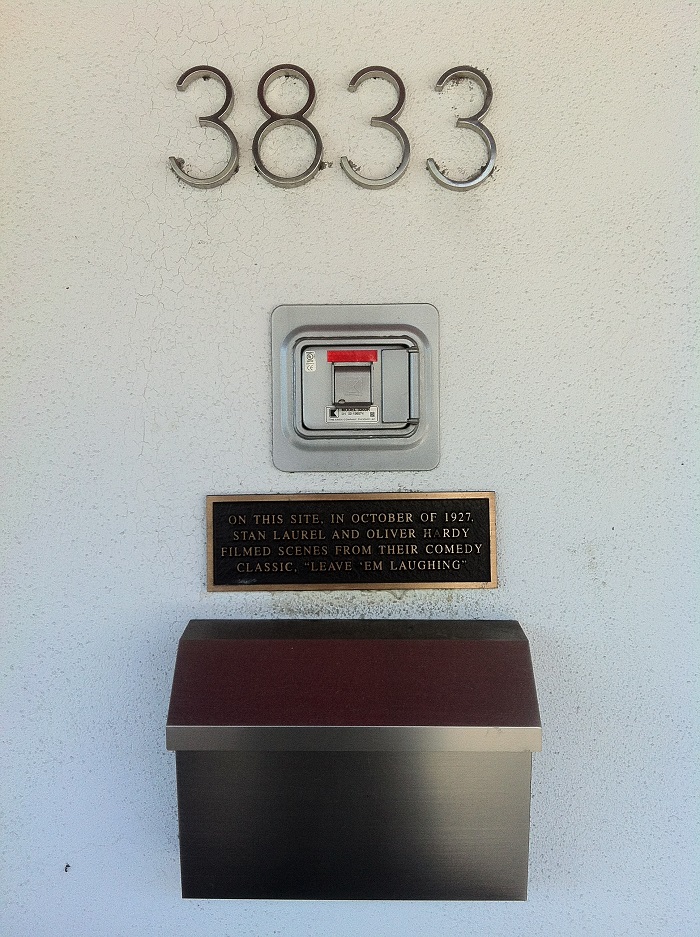
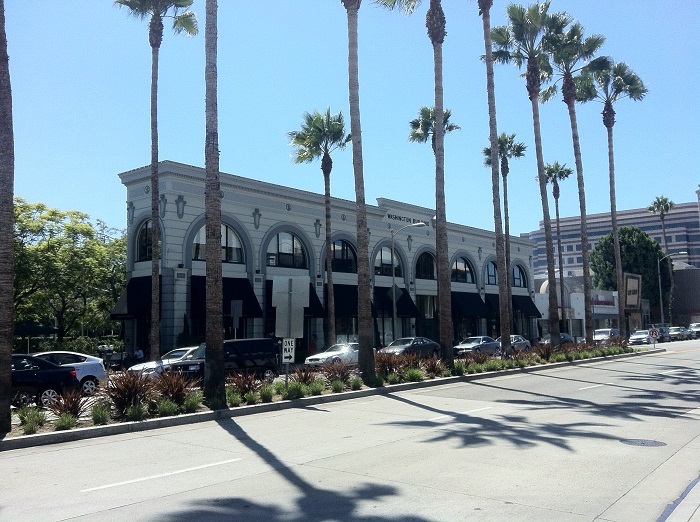
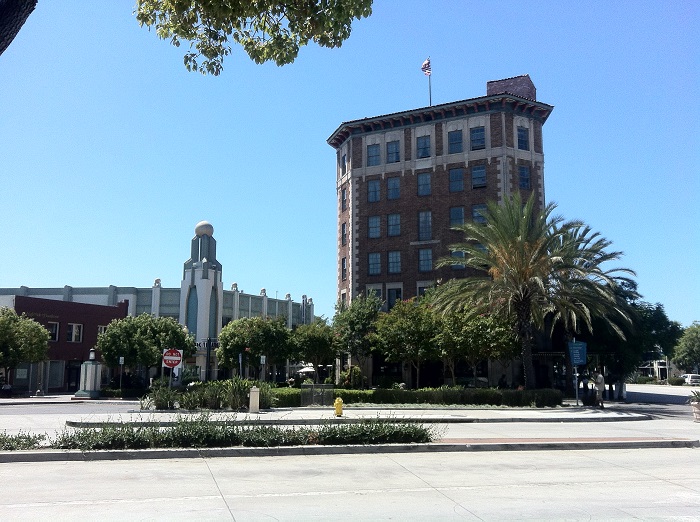

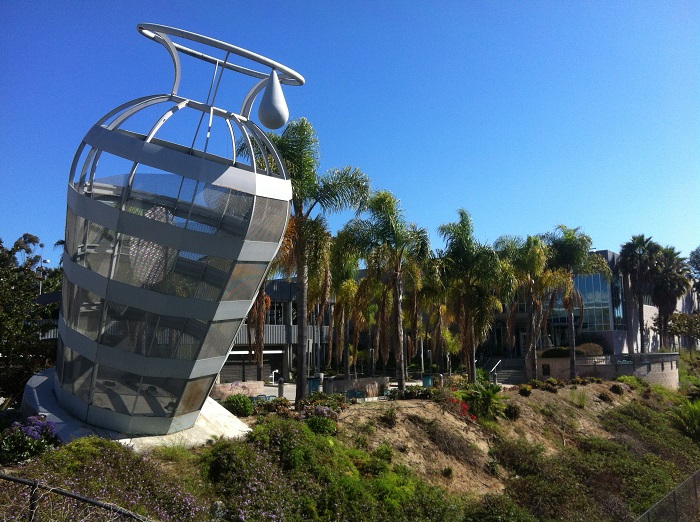
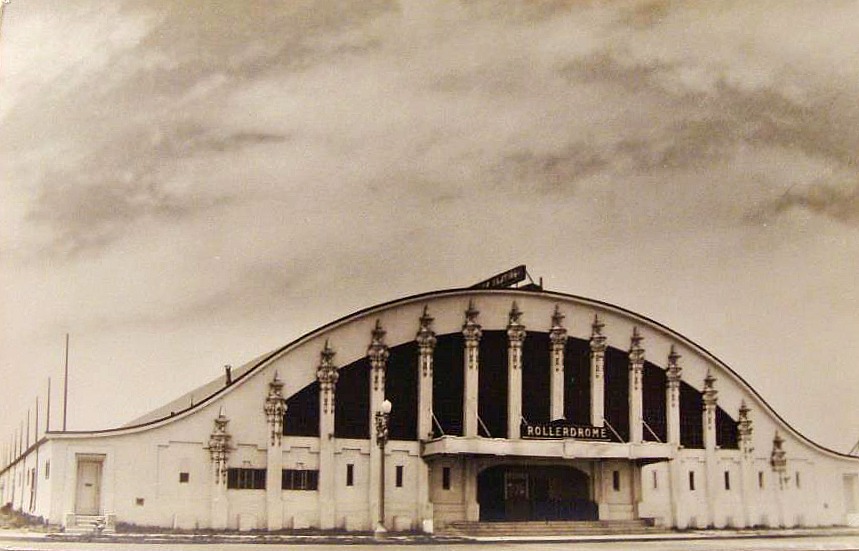
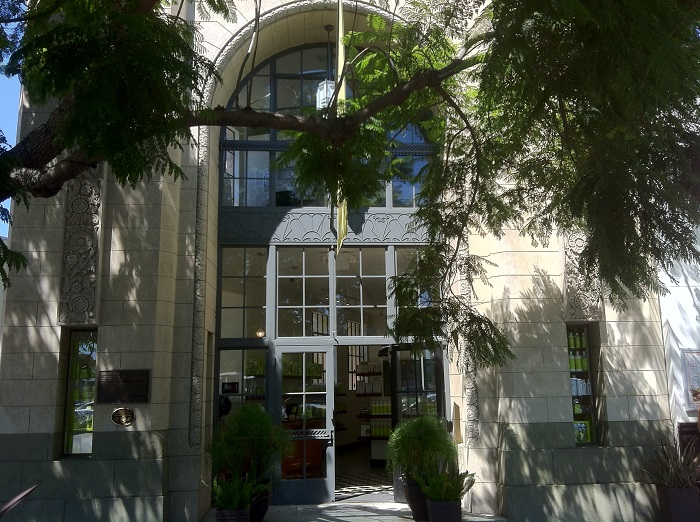
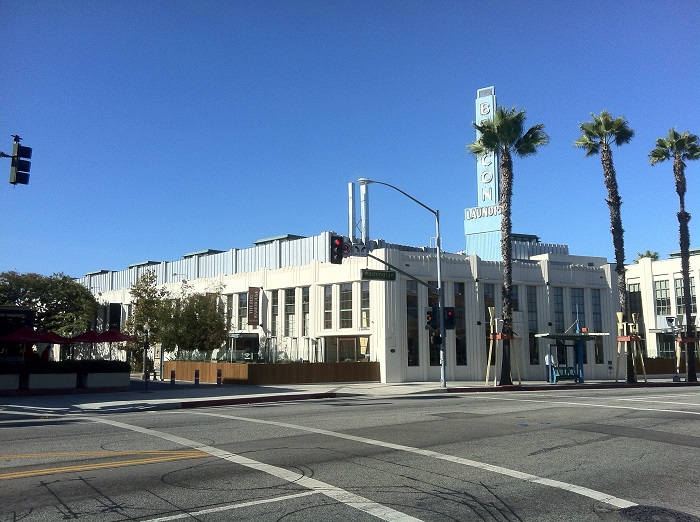
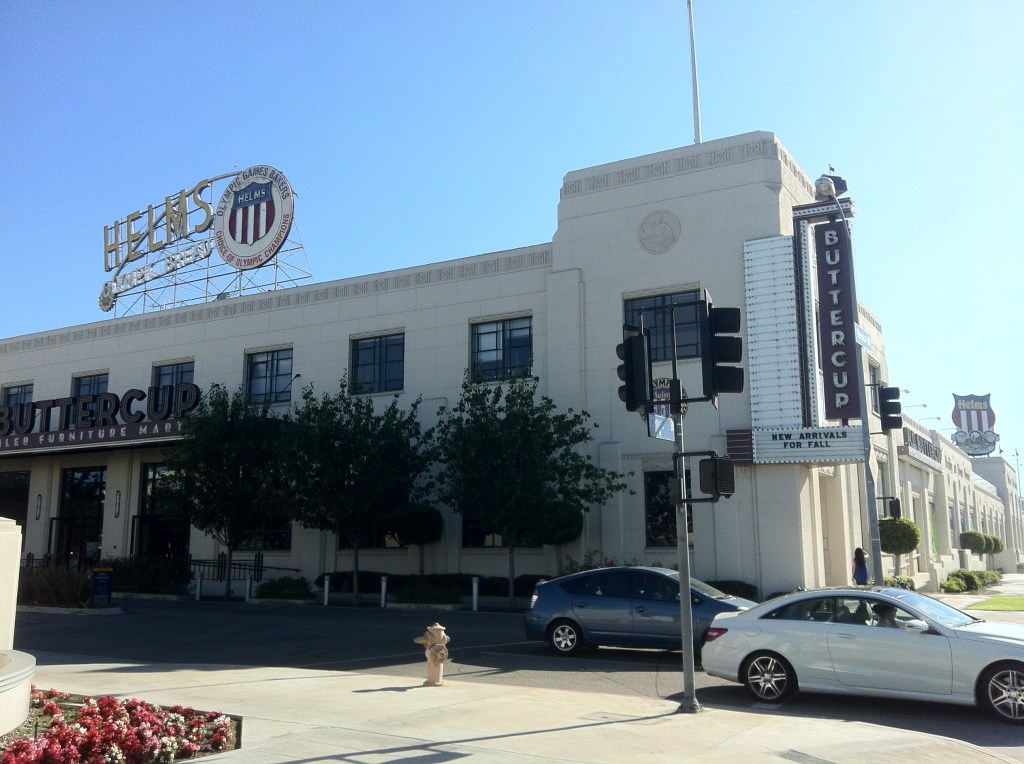
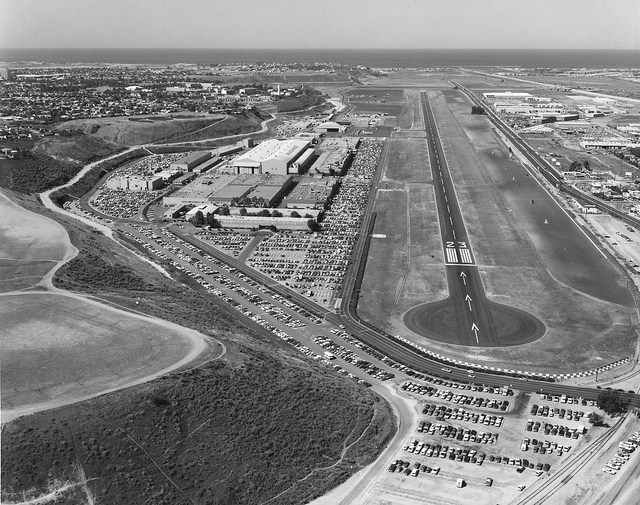
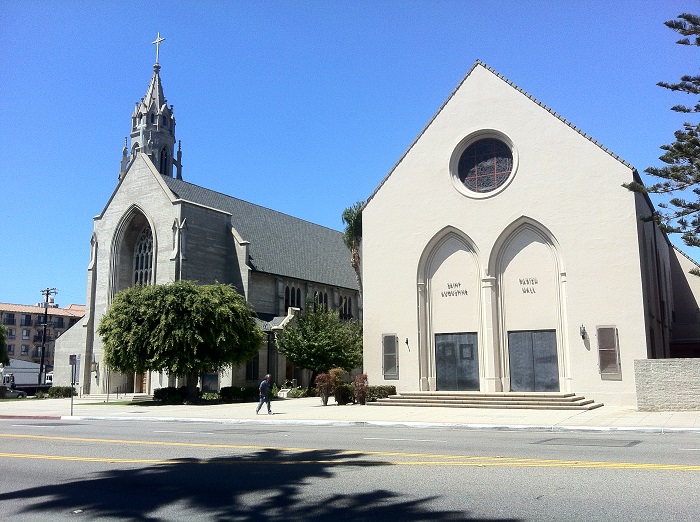
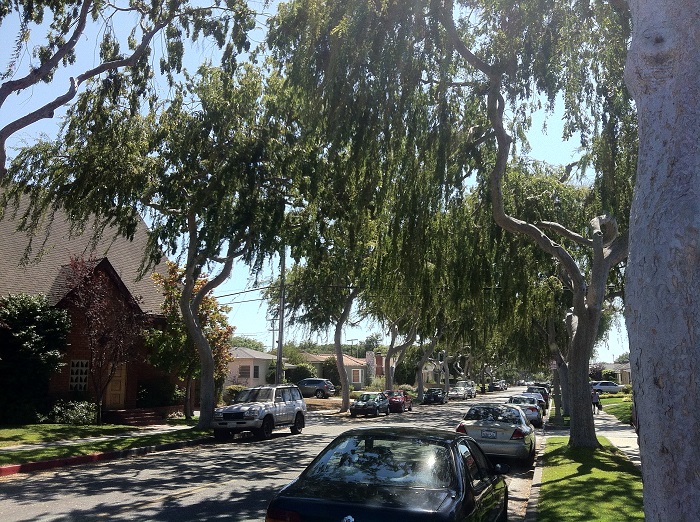
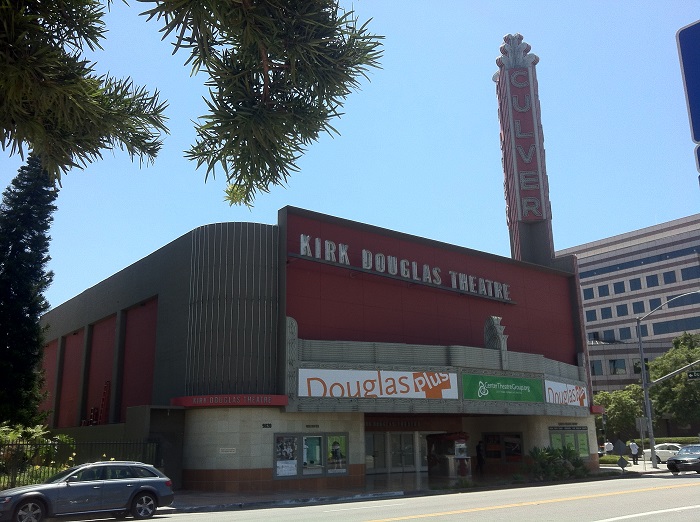
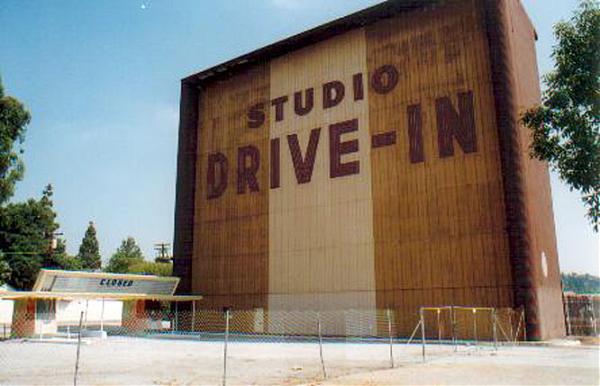
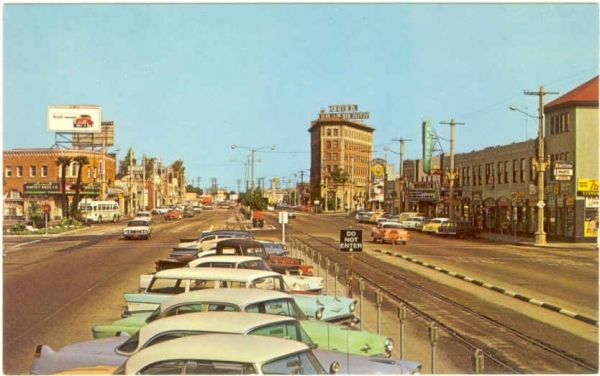
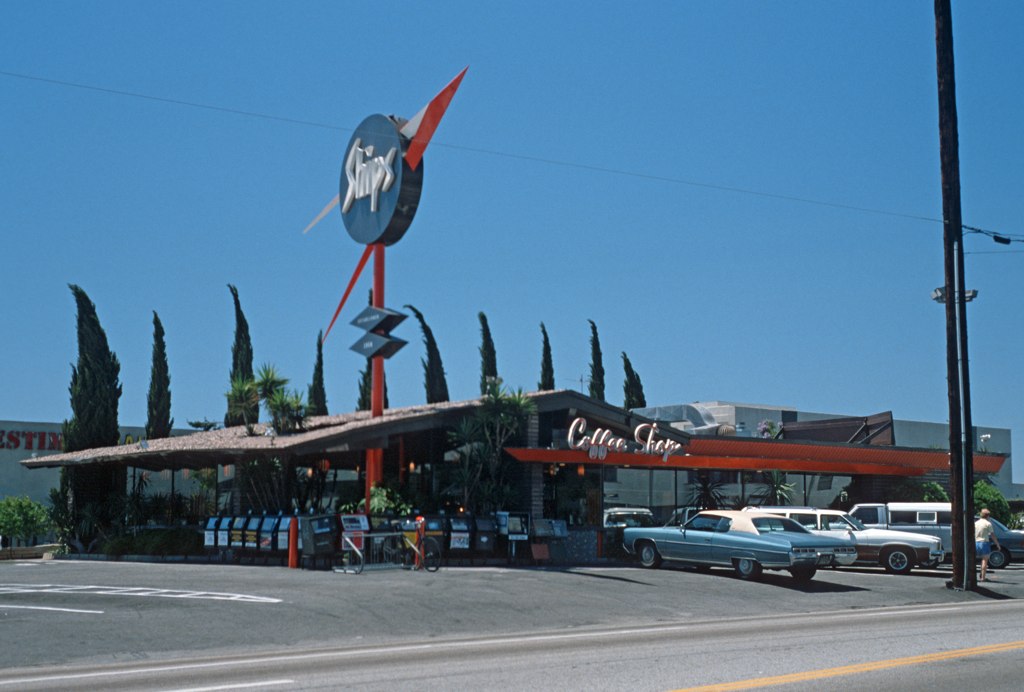

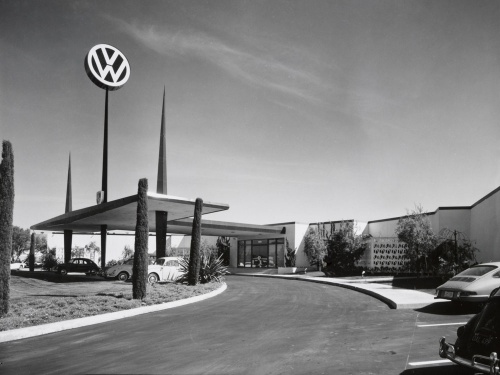
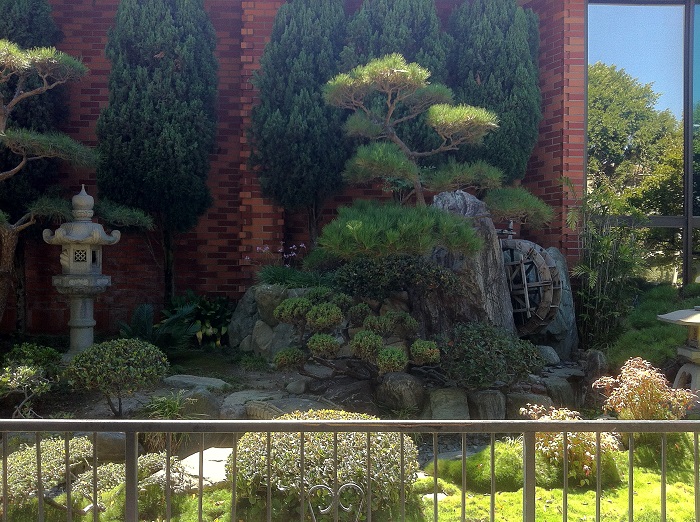

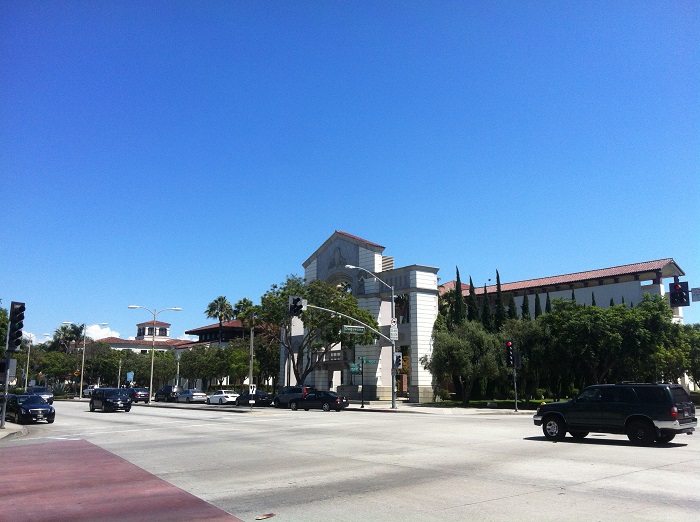

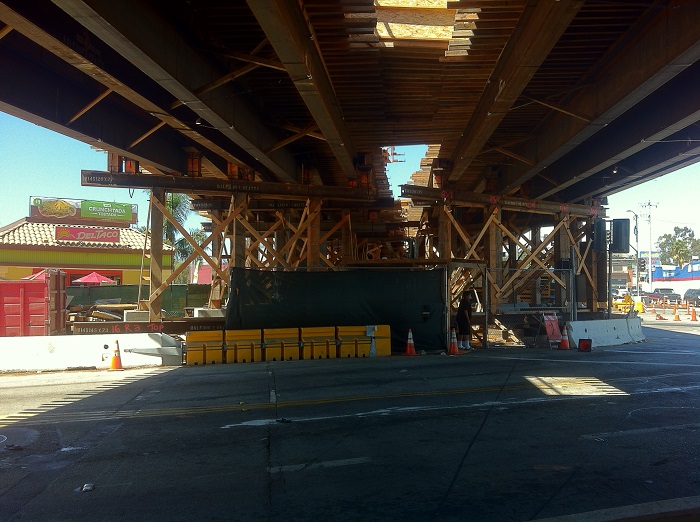
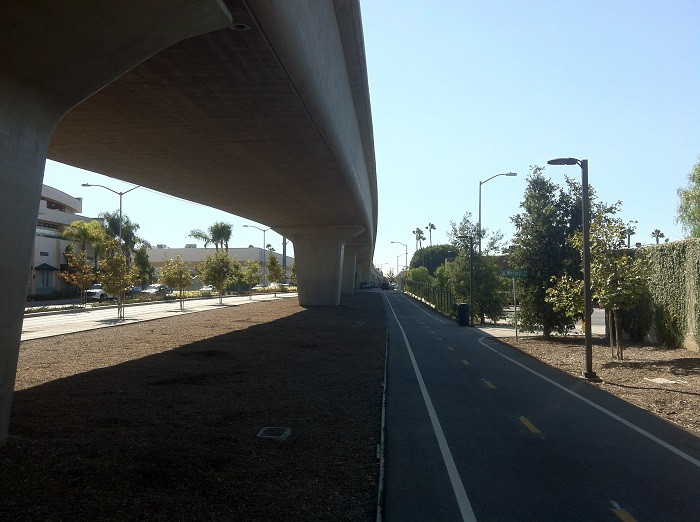
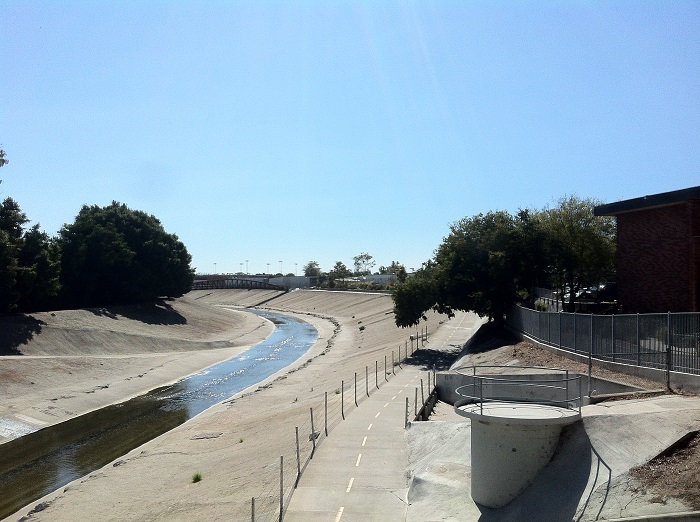
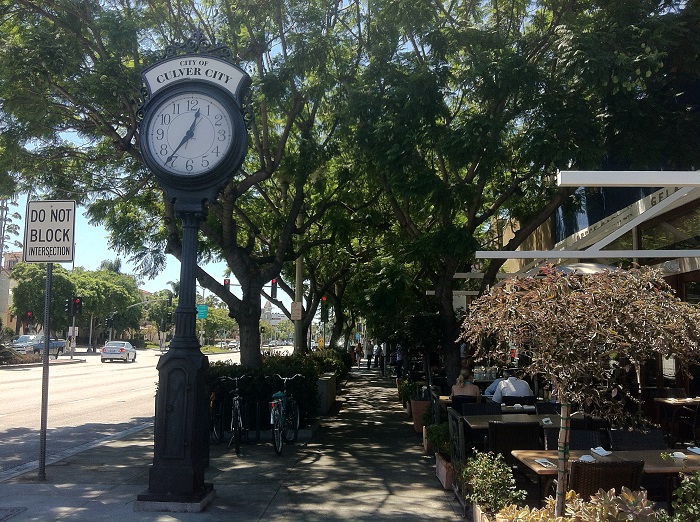
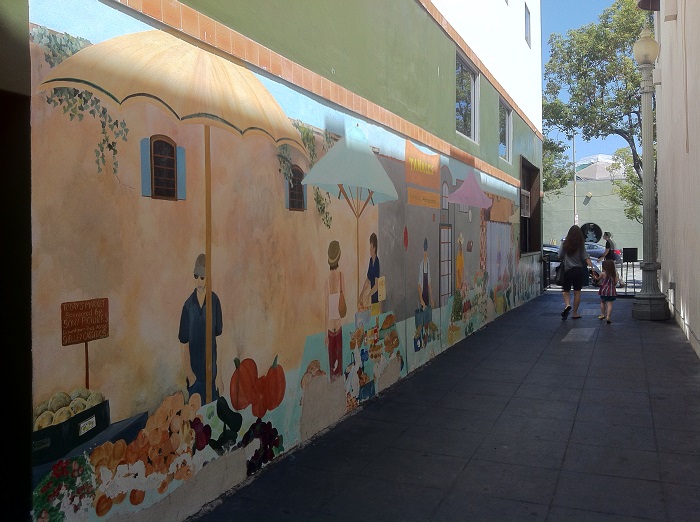
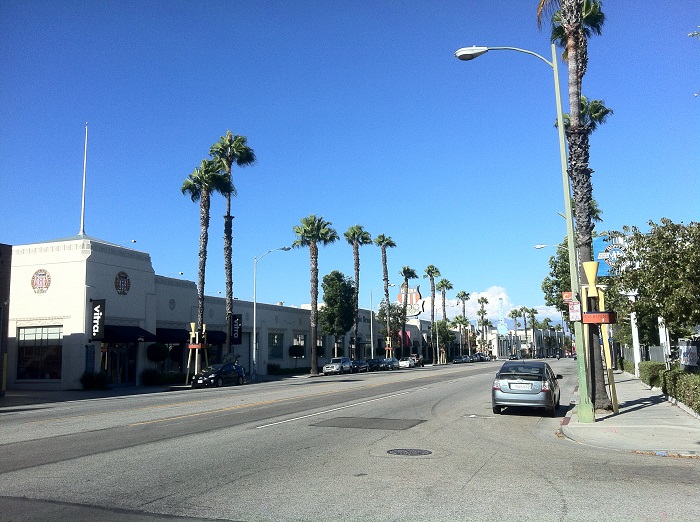
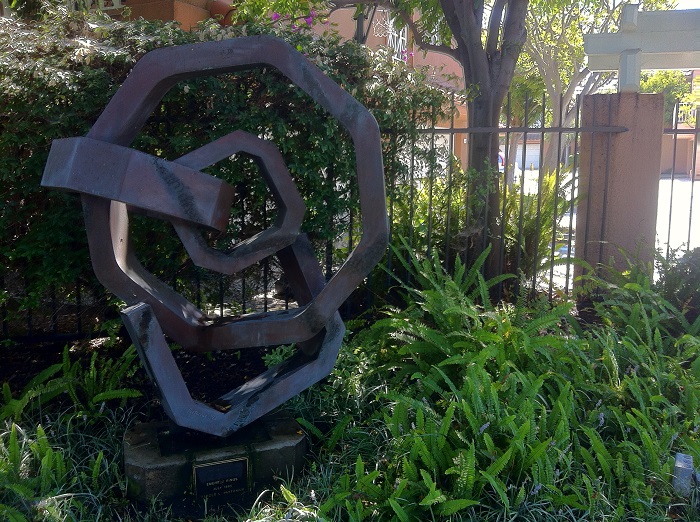
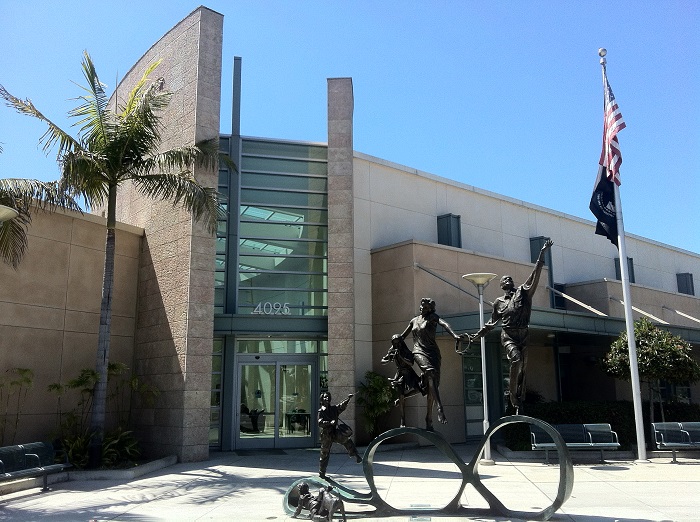
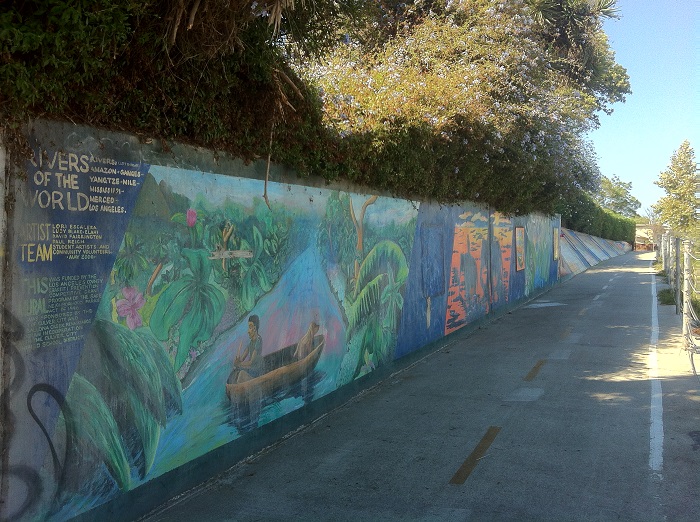
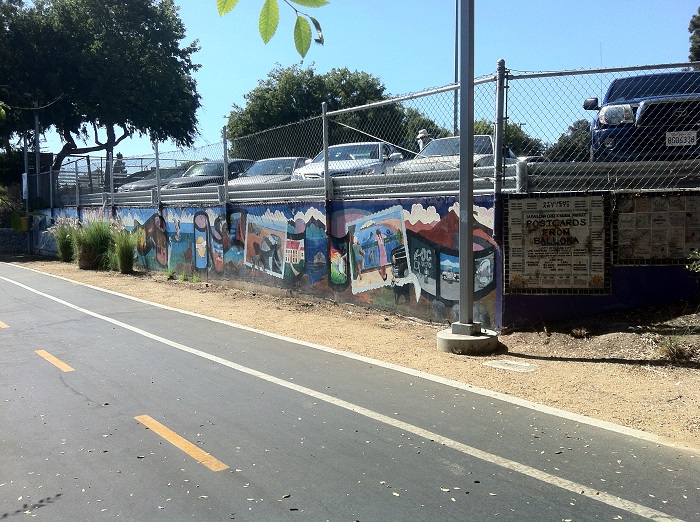
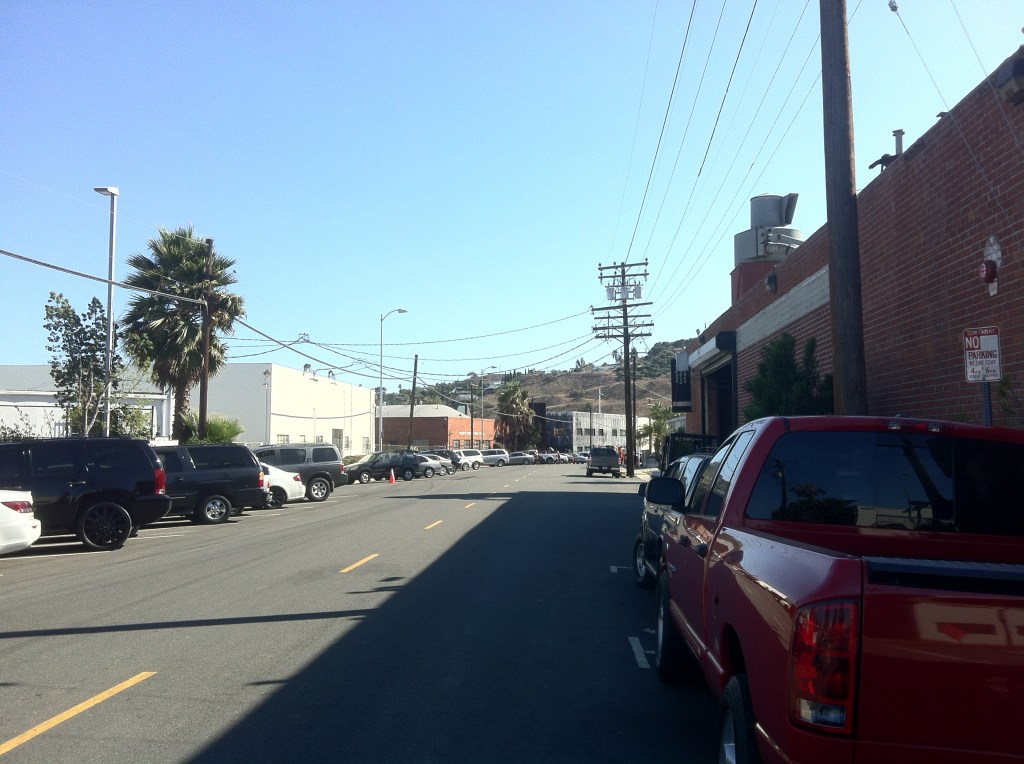
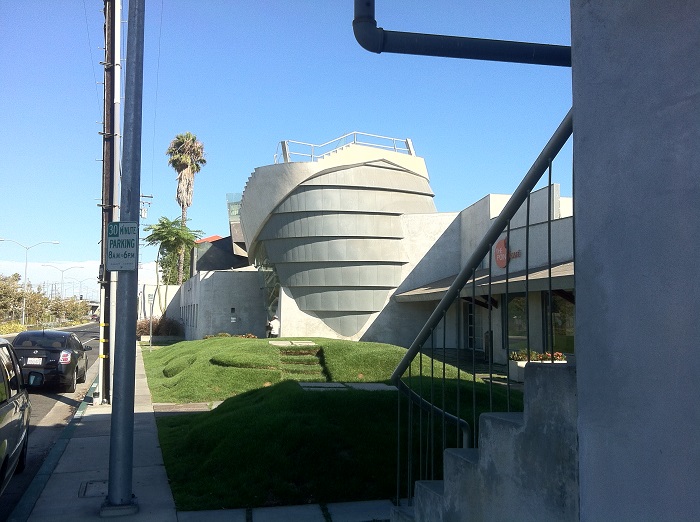
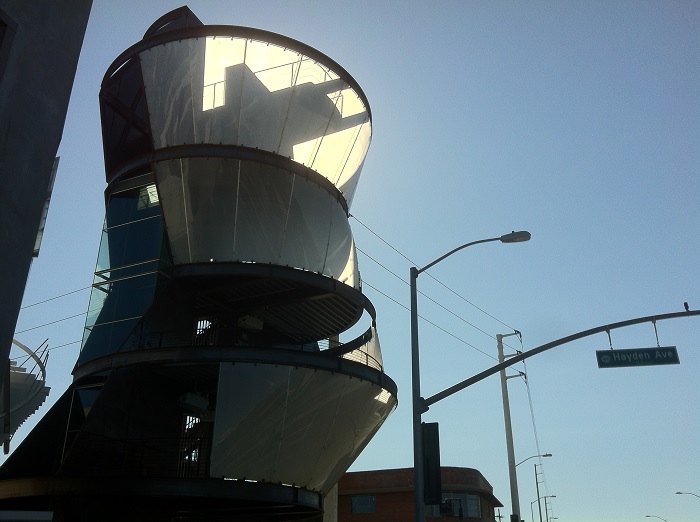

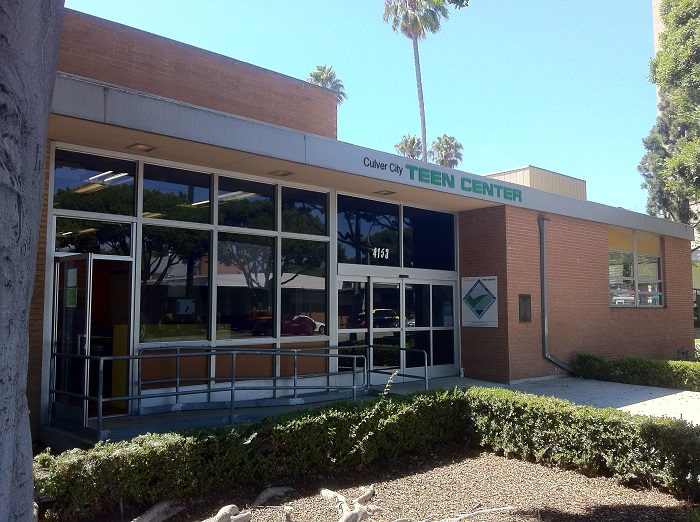
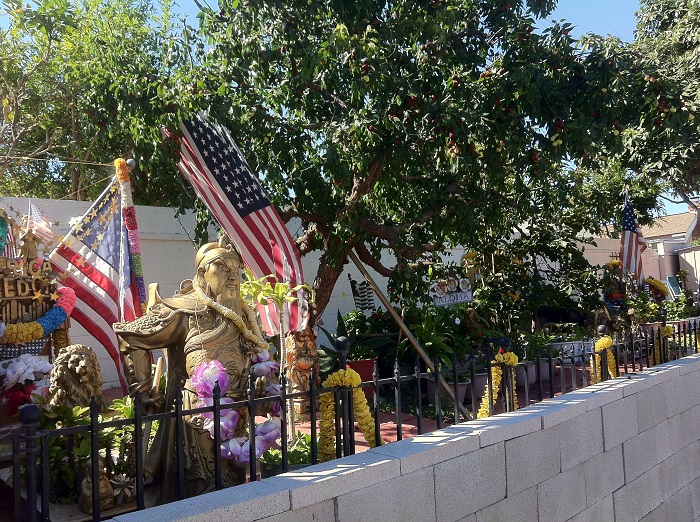
CULVER CITY COUNCIL – I NOMINATE ERIC BRIGHTWELL AS YOUR ‘MAN OF THE YEAR’
! THIS ARTICLE, WITH IT’S PAIN-STAKING RESEARCH, AWESOME PHOTOS IS OUTSTANDING!
LikeLiked by 1 person
Thanks, that means a lot!
LikeLike
Stunning – just spent 15 minutes perusing the site – came away with
intentions of further contact – especially Julie (?) at the Historical
Society.
LikeLiked by 1 person